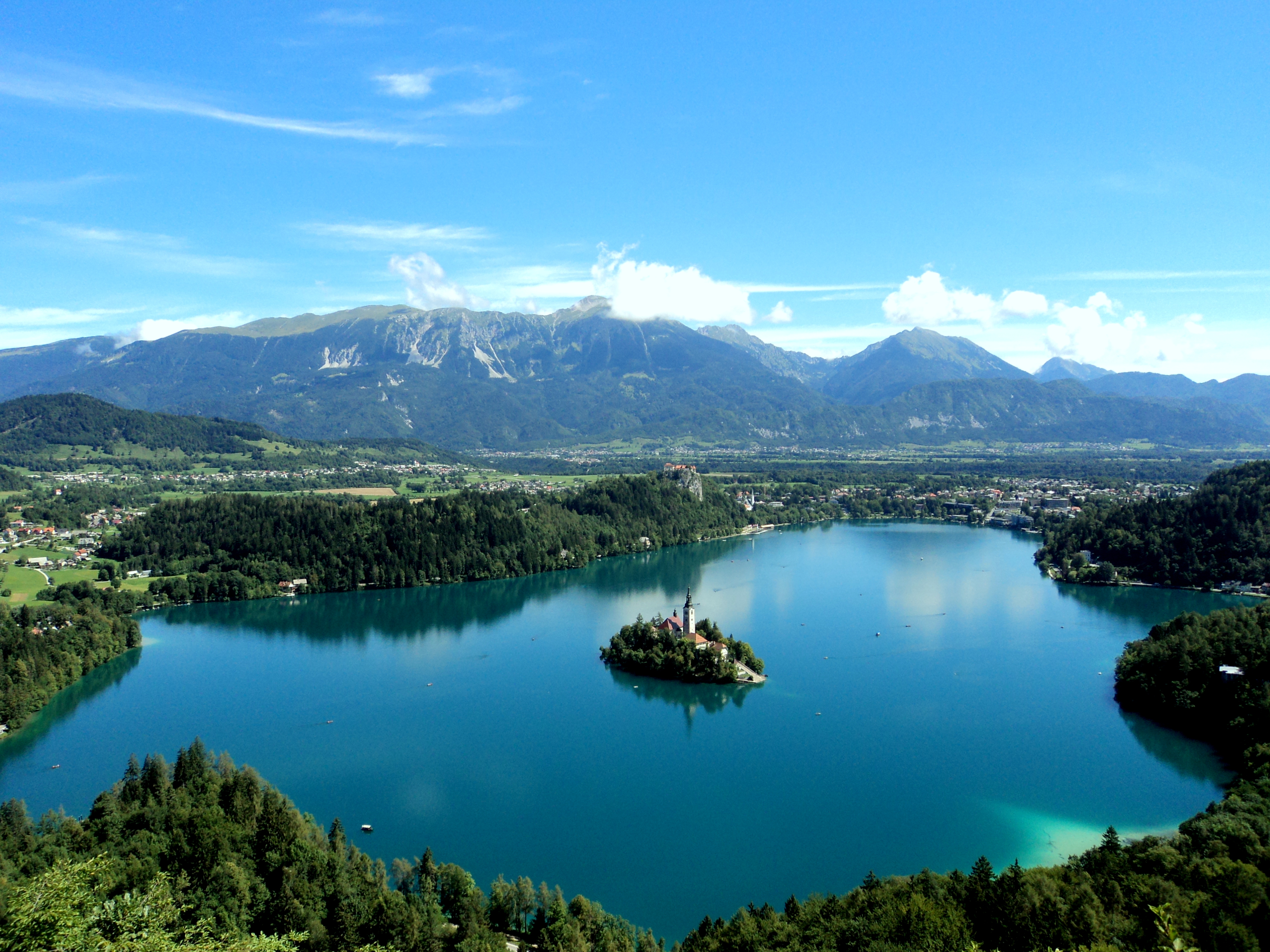

Slovenia is a small, picturesque country located in Central Europe, bordered by Austria to the north, Hungary to the northeast, Croatia to the south and southeast, and Italy to the west. Nestled between the Julian Alps and the Adriatic Sea, Slovenia is renowned for its stunning landscapes, charming villages, and vibrant cities.
Slovenia is often described as a hidden gem due to its breathtaking natural beauty. The country boasts a diverse landscape that includes lush forests, dramatic mountains, and pristine lakes. Lake Bled, with its iconic island church and castle as shown in the pictre above, is one of the most famous sights. The Triglav National Park, home to the Julian Alps, offers numerous hiking trails and opportunities for outdoor activities.
Slovenia has a rich cultural heritage that reflects its diverse history and influences from neighboring countries. The capital city, Ljubljana, is known for its vibrant arts scene, beautiful architecture, and lively atmosphere. The picturesque old town is filled with cafes, shops, and cultural institutions. Slovenia is also famous for its wine regions, particularly in the areas of Primorska and Posavje, where local vineyards produce high-quality wines.
Slovene (Slovenščina) is the official language of Slovenia and one of the South Slavic languages. It is spoken by approximately 2.5 million people, primarily in Slovenia, but also by Slovene communities in neighboring countries and around the world. Slovene is a unique language that reflects the rich cultural heritage and history of the Slovenian people.
One of the most remarkable aspects of Slovene is its astonishing variety of dialects. The language boasts around 47 distinct dialects, with seven major dialect groups thriving within a relatively small geographical area. These dialects include Upper Carniolan, Lower Carniolan, Prekmurje, and others, each varying significantly in pronunciation, vocabulary, and grammar. This incredible linguistic diversity creates a vibrant tapestry of regional variations, showcasing the richness of Slovene culture. However, this complexity can pose challenges for both speakers and learners, as understanding and communicating across dialects requires a deep familiarity with the nuances of the language.
Slovene is known for its intricate grammatical structure, featuring six grammatical cases: nominative, genitive, dative, accusative, locative, and instrumental. Additionally, Slovene has a unique feature—dual conjugation—which allows speakers to express the dual form for two entities. This grammatical structure not only adds depth to the language but also enhances its beauty, allowing for nuanced expression in everyday conversation. The language’s pitch accent further contributes to its lyrical quality, where the meaning of words can shift based on intonation, creating a melodic flow that many find enchanting.
Learning Slovene offers a wealth of benefits that enhance both personal and professional experiences. By understanding Slovene, you gain insights into Slovenia's rich history, literature, and traditions, fostering a deeper appreciation of its unique cultural identity. Proficiency in the language enhances your travel experiences, allowing for meaningful interactions with locals and access to stunning landscapes like the Julian Alps and Lake Bled. As Slovenia grows in the European market, knowledge of Slovene can provide a competitive edge in fields such as tourism and international relations, opening doors to exciting career prospects. Additionally, learning Slovene connects you to a vibrant community of approximately 2.5 million speakers worldwide, enriching your social network. Moreover, acquiring a new language sharpens cognitive skills and improves problem-solving abilities. If you can learn Slovene, you can learn any language, making it not only a rewarding pursuit but also a stepping stone that simplifies the process of learning languages in general.
This website serves as a comprehensive resource for anyone looking to learn Slovene. With a structured approach, it features a Chapters page that guides users through essential grammar concepts, breaking down the complexities of the language into manageable sections. Each chapter is designed to build understanding progressively, making it easier to grasp Slovene's unique grammatical rules. Additionally, the Charts page offers quick access to vital conjugation and declension charts, as well as information on possessives, pronouns, and other critical grammatical elements. This allows users to reference these essential aspects of the language effortlessly. Together, these resources create a user-friendly experience, enabling learners to build their proficiency in Slovene efficiently and effectively.